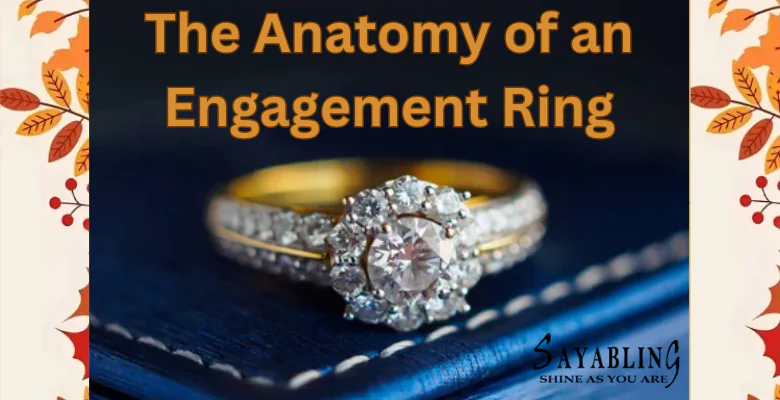An engagement ring is more than just a piece of jewelry. it’s a symbol of love, commitment, and the promise of a future together. Choosing the right engagement ring can be a significant decision, So should know a few tips about How to Pick an Engagement Ring.
You should completely understand the different parts of a ring while selecting or designing the perfect engagement ring. In this blog, we will delve into the anatomy of an engagement ring, exploring the different elements that make it unique and meaningful.
Different Parts of an Engagement Ring
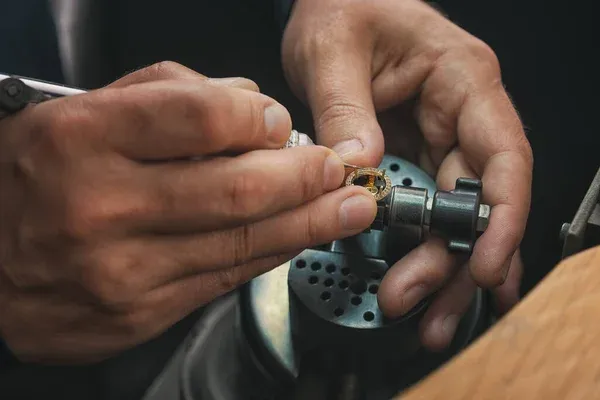
1. The Band (Shank)
The band, also known as the shank, is the circular part of the ring that wraps around the finger. It serves as the foundation for the ring and holds all the other elements together. The design of the band can vary greatly, depending on the personal preferences of the wearer. Here are a few common types of bands, after reading this you be aware of How to Pick a Perfect Wedding Band for Engagement.
- Plain Band: A simple, unadorned band that focuses all attention on the center stone. This classic choice is elegant and timeless.
- Pavé Band: The band is lined with small diamonds or gemstones, adding extra sparkle and texture. Pavé settings offer a continuous shimmer.
- Split Shank: In this design, the band splits into two or more sections as it approaches the center stone, creating an intricate and unique appearance.
- Twisted Band: A more artistic choice, the band appears to be twisted or braided, symbolizing the intertwining of two lives.
2. The Center Stone
The centerpiece of any engagement ring is the center stone. Traditionally, this is a diamond, but other gemstones like sapphires, emeralds, or rubies can be used as well. The choice of the center stone is a reflection of personal style and can have symbolic meaning as well.
Key characteristics of the center stone include:
- Shape: The Most Popular Diamond Shapes for Engagement are round, princess, cushion, oval, emerald, marquise, pear, and heart. Each shape brings a different aesthetic. For example, round cuts are classic and brilliant, while emerald cuts are sleek and sophisticated.
- Carat Weight: This refers to the size of the stone. A higher carat weight typically means a larger stone, though the cut and shape can affect how large the stone appears.
- Cut: The cut of the stone determines how well it reflects light. A well-cut diamond will sparkle brilliantly, while a poorly-cut stone may appear dull.
- Color and Clarity: These two factors impact the visual appeal of the stone. Color refers to how white or colorless the diamond is (graded from D to Z), while clarity refers to the presence of any internal or external imperfections (inclusions or blemishes).
3. Prongs or Setting
The prongs, or setting, are the metal arms that hold the center stone securely in place. The type of setting not only impacts the look of the ring but also its security and how much light passes through the stone. Common ring settings include:
- Prong Setting: The most common type, where 4 to 6 prongs hold the center stone. This setting allows maximum light to enter the diamond, enhancing its brilliance.
- Bezel Setting: The stone is surrounded by a metal rim, offering a sleek and modern look while providing extra protection.
- Tension Setting: The stone is held in place by pressure from the band, giving the illusion that the stone is floating. This setting offers a minimalist and contemporary aesthetic.
- Halo Rings: A circle of smaller diamonds surrounds the center stone, making it appear larger and more radiant.
4. Side Stones or Accents
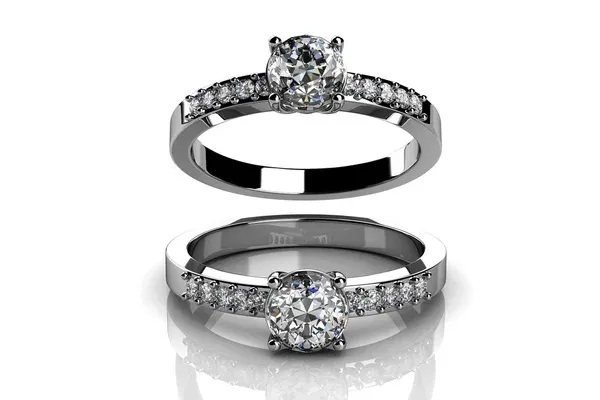
Side or accent stones are smaller gemstones placed alongside the center stone, on the band, or at the side of the engagement ring. They add extra brilliance and detail to the ring, creating a more luxurious look. Common arrangements include:
- Channel Setting: Diamonds or gemstones are set into a channel in the band, offering a smooth and continuous line of sparkle.
- Three-Stone Setting: Features a large center stone flanked by two smaller stones, symbolizing the past, present, and future of the relationship.
- Baguette Accents: Slim, rectangular diamonds are placed on either side of the center stone, often in a step-cut design.
5. The Head and Basket
The head of the engagement ring is the metal structure that holds the center stone. It includes the prongs or bezel and ensures that the stone is secure. The basket is the part of the head that sits below the stone, often providing additional support and sometimes contributing to the design with intricate details.
- Peg Head: A separate head that is soldered to the shank, often used to give the center stone more height and prominence.
- Integrated Head: Part of the ring’s band, this setting style provides a seamless look between the center stone and the shank.
6. Shoulder
The shoulder is refers as the part of the engagement ring that transitions from the base (shank) towards the setting or center stone. It’s the area on each side of the ring where the band begins to rise and support the main stone or decorative elements.
- Design of the Shoulders: The shoulders can be plain or adorned with accent stones or intricate details. For example, in a pavé or channel setting, the shoulders often feature small diamonds or gemstones to add extra sparkle and interest.
- Shoulder Shape: The shoulders may also be tapered (narrower toward the center stone) or rounded, depending on the ring’s design. The shoulder design contributes to the overall appearance and balance of the ring.
7. Bridge
The bridge of a ring is the structural element beneath the center stone that connects the two sides of the band. It supports the head (which holds the center stone) and helps distribute the weight and stress across the ring.
- Location: The bridge typically sits under the gallery and between the shoulders, providing extra support to the setting.
- Function: In addition to offering structural integrity, the bridge sometimes serves as an area for additional detailing or engraving, adding a hidden element of beauty to the engagement ring’s design.
8. Ring Size
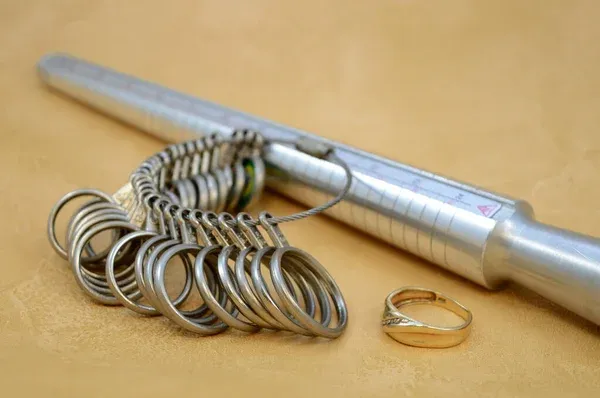
Ring size refers to the circumference or diameter of the inner part of the ring, determining how well it fits on the wearer’s finger and directly impacting comfort and security. Typically measured in millimeters, ensuring the right size is essential for a snug, comfortable fit without being too tight or loose, making accurate sizing a key aspect of choosing or designing a ring.
9. Gallery
The ring gallery refers to the area beneath the center stone and between the prongs or setting. Some engagement rings feature decorative elements in the gallery, such as filigree, milgrain, or engraving. These details are often subtle but add an extra layer of beauty and uniqueness to the ring and are referred as an important part of the ring.
10. Engraving and Personalization
Many engagement rings feature engraved details on the inside or outside of the band. These can be inscriptions of meaningful dates, names, or even short messages. Personalizing the ring in this way adds sentimental value and makes it truly one-of-a-kind.
11. Metal Choice
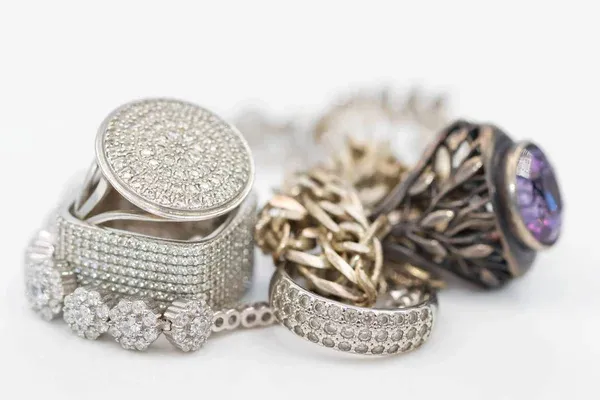
The metal used for the band and setting can dramatically affect the overall look and feel of the engagement ring. Popular metal choices include:
- Platinum: A durable and hypoallergenic metal that has a natural white sheen. It’s often considered the most luxurious option.
- White Gold: Similar in appearance to platinum but more affordable. White gold is typically rhodium-plated to enhance its luster.
- Yellow Gold: A classic choice with a warm, rich hue. Yellow gold complements vintage and traditional styles.
- Rose Gold: Known for its romantic, pinkish hue, rose gold has gained popularity for its unique and modern look.
12. Symbolism in Design
Beyond the individual components, the design of an engagement ring often carries deep symbolism. For instance:
- The circle of the band represents eternity and the never-ending cycle of love.
- A solitaire setting highlights the singular importance of the partner.
- Three-stone rings symbolize a couple’s past, present, and future.
Conclusion
The anatomy of an engagement ring is a perfect blend of artistry, craftsmanship, and symbolism. Every element, from the choice of the center stone to the design of the band, contributes to its beauty and meaning.
Understanding these components can help you make a more informed decision when selecting or designing a ring that truly represents your love and commitment. Whether you prefer something classic, modern, or unique, the perfect engagement ring at SayaBling, waiting to tell your love story.
FAQ’s
Q.1: What is the most popular center stone shape for an engagement ring?
The round brilliant cut diamond is the most popular shape due to its classic appearance and exceptional brilliance. Other popular shapes include princess, oval, cushion, and emerald cuts.
Q.2: What is the gallery in an engagement ring?
The gallery is the space or decorative design underneath the center stone, between the prongs or the setting. It can feature intricate details like filigree or engraving, contributing to the ring’s beauty from all angles.
Q.3: Can I customize the band on my engagement ring?
Yes, the band (shank) can be customized in many ways, from the type of metal to its design. You can choose from a plain, smooth band, a pavé band with small diamonds, a twisted band for a more artistic look, or even add engraving for a personalized touch.
Q.4: What is the difference between a pave setting and a channel setting?
In a pave setting, small diamonds or gemstones are embedded into the band, with tiny metal prongs holding them in place, giving the ring a continuous sparkle. While, in a channel setting, stones are set between two strips of metal that hold them in place, creating a sleek and smooth appearance.
Q.5: What does “carat” mean, and how does it affect the ring’s price?
Carat refers to the weight of the diamond or gemstone. A higher carat weight means a larger stone, and since larger diamonds are rarer, the price increases significantly with carat size.
Q.6: How do I know if the setting will protect the stone?
Settings like the bezel or halo provide more protection because they encase or surround the stone, minimizing the risk of chipping or damage. Prong settings, while offering more light exposure, may leave the stone more vulnerable to knocks.
